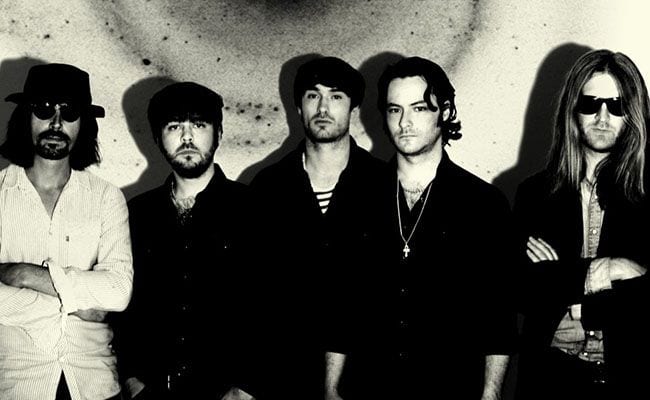
The Beatles were an anomaly in many ways. One of their less remarked characteristics is how they became more popular while still pushing boundaries and being less obviously “commercial”. It’s usually the other way round: for example, Supergrass, whose 2005 album Road to Rouen was light years ahead of their bubblegum 1995 debut, but sold only half the amount.
The Coral are a band who do firmly belong in the “getting better as they sell less” bracket. Their first two albums on the early ’00s had major commercial appeal — and company in the shape of the amiable, straightforward folky pop of the Kooks and Razorlight. Sure, the Coral had a quirky edge (spaghetti western guitar and sea shanties) that marked them out even then, but their capacity for growth and musical invention was not immediately self-evident. Fast forward to 2010, and Butterfly House showcased masters of their craft: a gem of an album, blending psychedelia, melody, mystery and golden-voiced harmonies to produce a stand-out of late British pop making. Shame it didn’t sell that much; it gives absolute meaning to the epithet under-rated.
Six years on from Butterfly House, and here comes the band’s first collection of new material (the psychedelic folk songs making up 2014’s The Curse of Love don’t count as they had been recorded nearly a decade earlier) since their career high. According to lead vocalist and songwriter James Skelly, the Coral went in to record their follow-up to Butterfly House straightaway. But the recordings fizzled out, and there is the sense they needed the long break to make the sot of album they have now fashioned.
Butterfly House 2.0 would have gone down well enough, and might have located a greater listenership half a decade later. Second number “White Bird” would certainly have sat well within Butterfly House and is quite simply gorgeous. It’s doubtful these highly accomplished musicians from the north of England have ever managed to emulate the masterly vocal harmonies of the Byrds quite as they do here. Add some Revolver-like guitar stylings (a feature of Distance Inbetween) and a metronomic groove, and “White Bird” is truly a track borne on the wings of angels.
Although they mine the Byrds/CSN mood again on “She Runs the River”, the story of “Distance Inbetween” is how the Coral have pushed through their comfort zone and unequivocally “got out there”. “Chasing the Tail of a Dream” is space music that recalls the ’70s purveyors of the genre. “Hawkwind” is underpinned by a beautiful liquid guitar break and a James Skelly vocal that sounds more like Dan Auerbach of the Black Keys than his north England roots.
The next song, the title track, finds Skelly in reflective, elegiac mood. He breaks up the heavy electric edge later on with the delphic “It’s You”. But “Million Miles” is more emblematic of this album: skuzzy guitar (courtesy of new lead guitarist and long-standing mate Paul Molloy). It’s almost glam in its thudding groove.
The band reportedly wanted “Distance Inbetween” to be grounded in their founder member rhythm section, and drummer Ian Skelly (James’s brother) and bassist Paul Duffy are a formidable combination. But James Skelly’s ear for a tune and his band’s propensity to decorate light and heavy tracks with subtle guitar stylings and bursts of keyboard (courtesy of the excellent Nick Power) mean that the songs never go down into unrelenting lockdown. The Coral’s outstanding love for the psychedelic hue is also, thankfully, never too far away.
In truth, there is no passenger track on this album, and the Coral give no impression of slackening off from first to last. The mood is intense, occasionally dark, on the edge, claustrophobic, none of it is done for laughs, a tendency of their in the past. Butterfly House surfed on mystery, while Distance Inbetween’s theme is more ominous, reflecting the band’s experience of “heavy shit” and sad loss these past few years. Whereas their erstwhile guitarist Bill Ryder-Jones’s latest solo album, in 2015, was built on introspection, the Coral seemingly needed extrospection to publicly express themselves
Ultimately, Distance Inbetween can’t quite summon the dominant golden theme that infused Butterfly House. But in other ways, this endlessly fascinating band have gone one step further, demonstrating that a love of Chris Isaak, ’70s American driving music, David Lynch dreamscapes, Question Mark and the Mysterians, and Eastern drone can still find a place for listening in the noise factory of 2016. Highly recommended.


![Call for Papers: All Things Reconsidered [MUSIC] May-August 2024](https://www.popmatters.com/wp-content/uploads/2024/04/all-things-reconsidered-call-music-may-2024-720x380.jpg)



